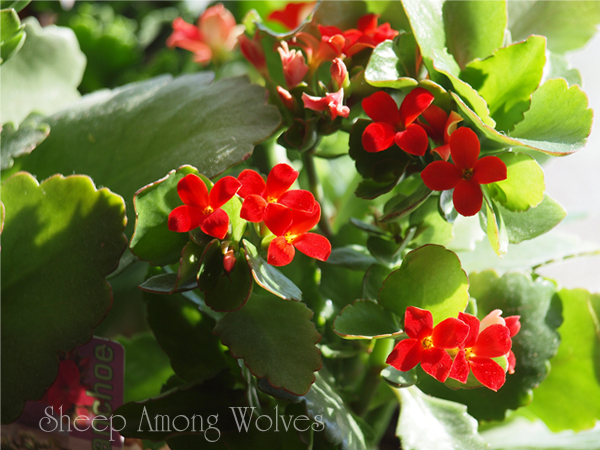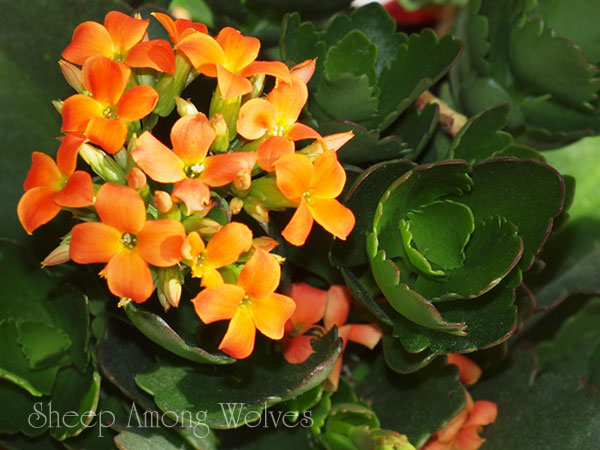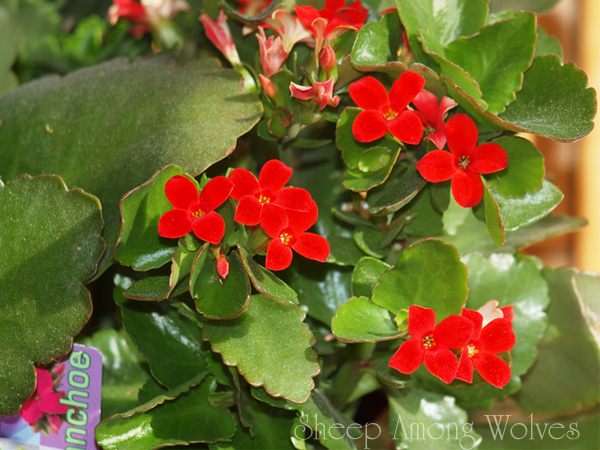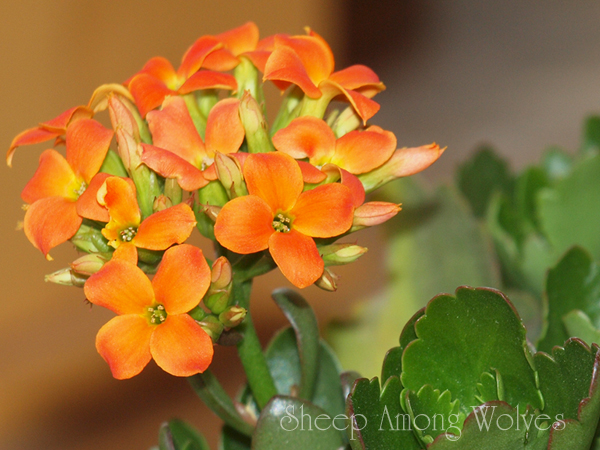Kalanchoe
I have received many gifts of Kalanchoe plants over the years. Every time I receive one, I kill it. Not on purpose of course, but predictably none the less. And not immediately, but inevitably it slowly succumbs to that state where it is not something I would want my guests to see.
I have always been able to grow plants outside. I have grown flowers and vegetables; even bushes and trees. But my track record with houseplants has been somewhat below par. My children tease me that I even managed to kill a cactus. They are, unfortunately, correct. A number of years ago we sold our house in the city and moved to the country. We bought a beautiful flowering cactus to go in our bathroom while the house was showing. I thought here at last a I had a plant that will not suffer from lack of water. At our new house, I placed it in my kitchen. And you guessed it, eventually it died.
It doesn’t seem to matter whether I water too much or too little. Whether I place plants in direct sun, or no sun at all. They soon succumb to my “care” and wilt away. This past Thanksgiving a friend gave me a stunning Kalanchoe plant. In fact, it was three small plants all in the same pot, in full and breathtaking bloom. I placed it on the counter to start and then after a week or so moved it to the kitchen table. It bloomed for about a month.
When the blooms died off I decided I would not be defeated this time. I went to my favorite resource, the internet, and searched for instructions on the care of Kalanchoe plants. I learned several very interesting things.
First of all, the Kalanchoe plant is originally from Africa. It prefers a hot, sunny climate. This winter it was -30° Celsius in our zone five region. The sunniest window is in our kitchen, over the sink. I placed the Kalanchoe on the sill after removing the spent flowers. It is thriving there in the south-facing window, the leaves are a dark green and the plant is sturdy and healthy.
Another growing tip is to water only when the plant is completely dry. Water thoroughly until the water runs out the drain hole, and be sure to empty the drainage tray. Kalanchoes do not like to sit in water.
The number of hours of daylight (and therefore darkness) are what trigger this little succulent to bloom. Our short winter days and long hours of darkness were perfect to encourage flowering, and I was delighted to see buds forming in early February.
I am enjoying the flush of orange and red flowers that have burst forth as tiny promises of spring. One of the plants has not put forth any flowers yet, but I feel immensely successful in the two that are. They have been blooming steadily for almost two months now. When they are done, I will cut the plant back by a third, and try to root the cuttings; apparently they will grow into new plants in a moist pot of soil covered with a plastic bag. When the weather is warm enough, I’ll move them to a shady spot on my deck, out of direct sunlight, and sheltered from the rain.
I might just have started a new era in our household! What plant do you suggest I try next?




